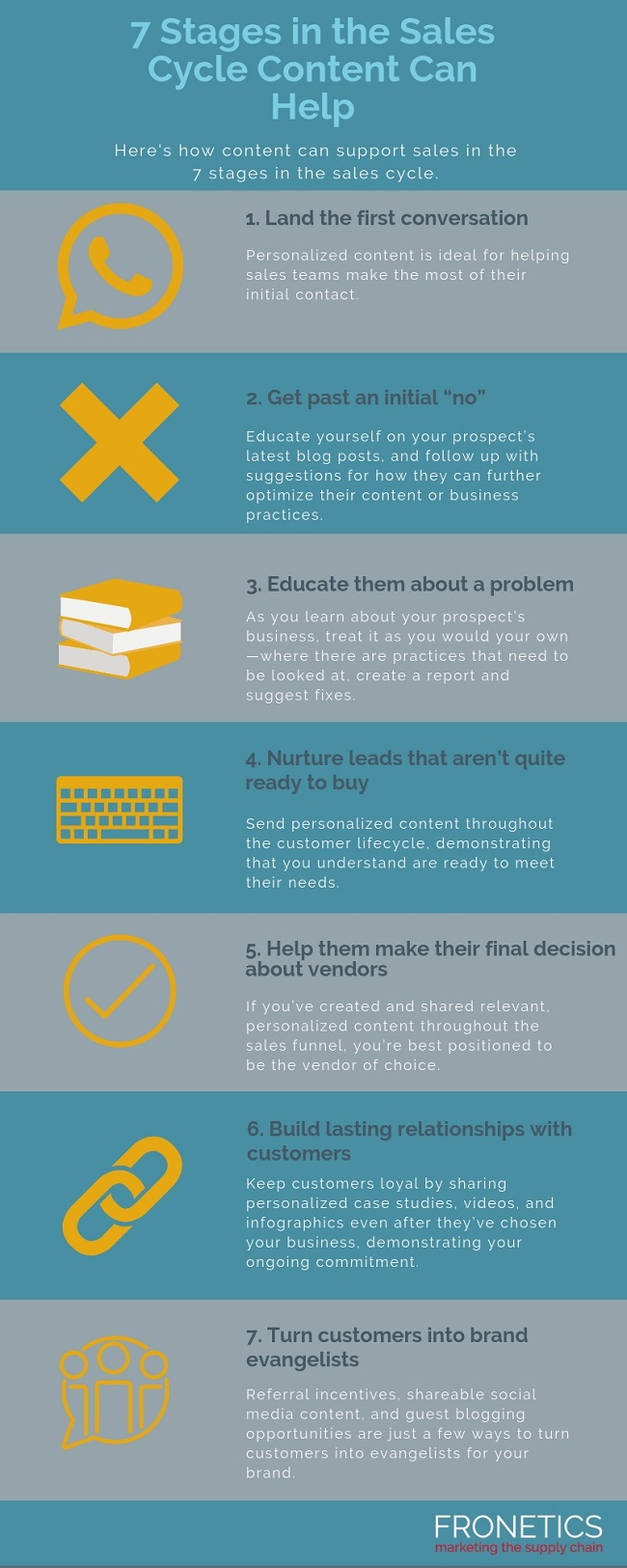
by Fronetics | Nov 13, 2018 | Blog, Content Marketing, Data/Analytics, Logistics, Marketing, Strategy, Supply Chain
The results are in: Artificial intelligence (AI) has significant value for many business sectors. But what are the most effective ways to apply AI to your supply chain management company?
Executives of many leading companies are looking for ways to integrate AI into their operations. A recent McKinsey & Co. study estimates that 40% of the potential value associated with data analytics today comes from techniques called “deep learning.” Deep learning refers to AI that can monitor a system and make adjustments rather than simply repeate a single task. Industry use of deep learning techniques remains relatively low as companies determine how best to use AI to meet business needs.
[bctt tweet=”Using AI this way can improve forecasting accuracy by 10-20%, allowing companies to reduce inventory costs by as much as 5% and generate 2-3% increased revenue.” username=”Fronetics”]
Supply chain management is one of the business sectors that can get the most value out of deep learning techniques. Brick-and-mortar retailers tend to see a 1-2% increase in sales revenue when they use AI to personalize promotions based on customer data analytics. Supply chain management organizations can expect to see greater benefit from AI that forecasts demand by analyzing the underlying market factors. Using AI this way can improve forecasting accuracy by 10-20%, allowing companies to reduce inventory costs by as much as 5% and generate 2-3% increased revenue.
In addition to reducing inventory costs in supply chain management organizations, deep learning can create trillions of dollars in value in marketing and sales revenue and save costs through predictive maintenance. The best way to determine how AI can serve your needs is to look at how your organization uses traditional analytics techniques: AI can often provide higher performance in conducting analytics and introduce additional layers of analysis. The technology is always improving, so the potential value for companies adopting deep learning techniques is expected to continue to rise.
There are, however, obstacles facing companies looking for ways to use AI techniques. It is essential to plan for the security and privacy issues of data analytics. Deep learning works best with large-scale datasets, which not all organizations can assemble or access. The level of expertise necessary to implement and service AI technology comes with added expenses, but determining the right way to apply AI to your organization makes these costs and challenges a rewarding investment.
Related posts:


by Fronetics | Nov 8, 2018 | Blog, Content Marketing, Current Events, Logistics, Marketing, Strategy, Supply Chain
Artificial intelligence (AI) is changing the way the global supply chain operates and may make most supply chain management companies obsolete in 5-10 years. What can your company expect and what are the best strategies for preparing?
AI has a significant presence in supply chain management. Leading companies already use AI to run predictive analytics and to automate repetitive, labor-intensive tasks like purchasing, invoicing, and customer service. But executives are still needed to make decisions after reviewing data.
[bctt tweet=”Authors from a recent study predict that in 5-10 years the supply chain will be run entirely by digital technologies that could eliminate the need for human oversight.” username=”Fronetics”]
According to a study from the Harvard Business Review, that’s about to change. In 5-10 years, the authors predict, the supply chain will be run entirely by digital technologies that could eliminate the need for human oversight. Blockchains can coordinate between the parties involved in flexible supply networks, improving transparency and crisis-response times. Robotics already automate warehouses and fulfillment centers, increasing efficiency and minimizing the risks of employee injury. Moreover, digital technologies are increasingly able to execute purchasing and inventory management tasks.
Digital control towers
The new nerve-center for leading organizations’ operations is the “digital control tower,” typically a room with walls of high definition screens showing real-time graphics and information on every step in the supply chain. Data analysts staff these rooms 24/7, monitoring the flow from order to delivery.
These control towers provide end-to-end visibility into global supply chains. Process bottlenecks and inventory shortfalls can be predicted and managed before problems develop. Digital control centers allow more predictive management styles based on up-to-date and accurate information, which results in increased customer focus and process efficiency. It is an operational model that is gaining popularity across business sectors.
What does this mean for supply chain management?
Technology will continue to replace human labor in supply chain management. As data analytics and self-learning technology develop, we can expect to see more kinds of jobs performed by AI. Planning for this trend towards automation is essential for all supply-chain companies.
The role of supply chain executives continues to change. Instead of managing people performing repetitive and transactional tasks, executives are working with a smaller number of highly specialized data experts to design information and material flows. The skill set associated with supply chain management will shift to focus on data analysis and algorithms, which will require new hiring or employee re-training. Finding skilled analysts to fill those roles will be crucial to organizations seeking to adapt to new supply chain conditions
Related posts:


by Fronetics | Nov 7, 2018 | Blog, Content Marketing, Logistics, Marketing, Social Media, Strategy, Supply Chain
Companies can reach millennial B2B buyers by partnering with popular social media users who speak with passion and expertise to young professionals.
Numbering 80 million, millennials have become the largest demographic segment in the United States and are expected to command more than $1 trillion in disposable income by the year 2020. As this generation comprises an increasing percentage of the B2B buying landscape, businesses must pay attention to their professional purchasing habits — which, it turns out, bleed over from their personal purchasing patterns.
Millennials are notoriously hard to reach through traditional marketing strategies. But successfully appealing to that demographic is becoming more and more important. Jay I. Sinha and Thomas T. Fung, marketing specialists at Temple University, explain how B2B companies can use “nano-marketing” techniques to generate buzz and build credibility with millennials.
Micro-influencers
Large companies have traditionally used celebrities and recognizable logos to promote their brands. But millennials have turned away from advertising and endorsements that aren’t perceived as authentic or based on expert knowledge.
Millennials have led a surge in the popularity of social media platforms, and companies have found increasing success in using sites like Instagram, Snapchat, Pinterest, and YouTube to market to this demographic.
[bctt tweet=”“Micro-influencers,” or social media users whose followers number between 1,000 and 100,000, have proven four times more likely to generate viewer engagement over the products they review than celebrity endorsements.” username=”Fronetics”]
“Micro-influencers,” or social media users whose followers number between 1,000 and 100,000, have proven four times more likely to generate viewer engagement over the products they review than celebrity endorsements. Partnering with micro-influencers is a highly affordable way for companies to make their brands visible and relatable.
Micro-influencers have helped turn start-ups into major brand-names and have helped established companies extend their influence into youthful markets, leading Inc. magazine to declare 2018 the “Year of the Micro-Influencer.”
Strategies for B2B companies
Sinha and Fung argue that this strategy is not just for B2C companies selling products known to appeal to millennial consumers. What’s known as nano-marketing, or partnership with micro-influencers, can be just as effective for B2B.
Sinha and Fung offer four managerial guidelines for B2B companies seeking to partner with micro-influencers.
1. Micro-influencers have specialized and self-selecting audiences.
Picking the right micro-influencer to partner with can help you target the sub-groups you want to reach. For instance, GE uses nano-marketing to help recruit female tech professionals.
2. Recognize the strengths of micro-influencers.
They make products and companies seem relatable to viewers by sharing their personal experiences. Companies can leverage this in their branding.
3. Nano-marketing works best as “a subtle nudge.”
Whereas traditional advertising has to be heavy-handed to be memorable, micro-influencers speak with credibility about brands that they personally have used.
4. Entertainment.
Micro-influencers find innovative ways of producing content that will appeal to their followers and incorporate their brand endorsement in creative formats.
Millennial B2B buyers should be an increasing focus of your targeted marketing activities — if they’re not already. How are you reaching this audience?
Related posts:


by Fronetics | Nov 6, 2018 | Blog, Content Marketing, Logistics, Marketing, Strategy, Supply Chain
Here’s how content can help support sales during the seven stages of the sales cycle, including personalization and building last relationships.
The sales process is often a complicated journey that includes uphill climbs and unexpected roadblocks. Sales teams are all too familiar with these obstacles, but they don’t have to fight these battles alone.
Arm a sales rep with targeted content to share with prospects during specific moments in the purchasing process, and it will build his or her reputation as a knowledgeable resource. That can be the key to getting a foot in the door, advancing through the final stages of a purchasers’ decision, or closing the deal.
Strong communication between sales and marketing can help achieve big-picture goals when it comes to creating content, including:
- mutual understanding of the buyer’s journey
- updated prospect insights that can affect future marketing content
- brainstorming content solutions to bottlenecks in the sales funnel
Let content support the sales cycle by demonstrating the business value of your product or solution.
Here are examples of how content can assist your sales team throughout the seven stages of the sales process, even when the sales journey goes off course.
Infographic: 7 Stages in the Sales Cycle Content Can Help

(Made with Canva)
Takeaway
According to DemandGen’s survey, 75% of buyers said that content had a significant impact on which vendor they chose. And that’s not all, 89% of respondents stated they selected brands that provided content that made it easier to demonstrate ROI and/or build a business case for their purchase.
These numbers highlight how important it is for sales teams to be armed with informative, relevant content to support the sales cycle. It’s not enough to just produce content, sale teams need to be ready to provide this content to potential customers at every point of contact.
Want help identifying what content your supply chain and logistics company can provide to your sales team? Let us help.
Related posts:


by Fronetics | Oct 29, 2018 | Blog, Content Marketing, Logistics, Marketing, Strategy, Supply Chain
What’s more important: prioritizing conversions or building traffic? The simple answer is both. Here’s why you need to balance your efforts for the best results.
The argument for building traffic or optimizing for conversions has no end. Like we stated in our earlier post, it’s a chicken-and-egg style debate. If you don’t optimize for conversions, what is the point of directing traffic to your site? On the flip side, if you don’t build traffic, who is visiting (and converting) on your site?
The problem is countless variables affect which of these goals you prioritize and when. Determining what you should be investing more energy into is dependent on your business, your strategy, and your target audience. Make sure you’re considering all factors when determining what makes the most sense for your brand and its online presence.
Why focus on conversions?
There are three main arguments for prioritizing conversion optimization:
- Low investment, high yield: The return on investment is significant, especially given the low cost of entry and easy process.
- Traffic optimization: while you may not increase traffic, by focusing on conversions you can increase the value of visitors to your website.
- Reinvestment potential: conversions will help generate funds to reinvest in your marketing effort.
All of these arguments focus on quality over quantity. By prioritizing conversions, every visitor becomes more valuable. Even with lower numbers of visitors to your website, if your conversion rates are high, you still realize a substantial return on your investment. The low cost of conversion optimization also makes it easy to implement without breaking the bank. We’ve even done some of the work for you, giving you tips when creating your landing pages.
Why focus on building traffic?
If you aren’t getting visitors to your website, there’s no point in worrying about conversions, right? But that’s not the only reason building traffic should be a priority. A few benefits of focusing on traffic include:
- Brand recognition: visitors will become familiar with your brand and content
- Momentum: concentrating on traffic is a long-term strategy and committing to the long-term gives your marketing efforts time to build momentum.
- Optimizing for value: there are a lot of metrics affiliated with building traffic, this allows you to collect and analyze data to see how you’re doing and to constantly improve.
By increasing traffic to your website and familiarizing new audiences with your brand, you have more opportunities to generate leads and those leads can turn into sales.
Why balance is the answer
[bctt tweet=”The most important thing to remember is that your content marketing strategy is a work in progress that is continually being tweaked. You’ll need to spend time and money prioritizing both building traffic and optimizing for conversions. ” username=”Fronetics”]
The most important thing to remember is that your content marketing strategy is a work in progress that is continually being tweaked. You’ll need to spend time and money prioritizing both building traffic and optimizing for conversions. Here’s Jennifer Hart Yim, Director of Strategy at Fronetics, to explain why we think you need to focus on both to maximize your efforts.
Video: Focus on Conversions or Building Traffic First?
Related posts:


by Fronetics | Oct 22, 2018 | Blog, Content Marketing, Logistics, Marketing, Strategy, Supply Chain
Content is your sales team’s best friend. Use these 7 strategies for putting your content to work to convert and retain customers.
As we’ve written about before, content can help your sales team win business. But you need to take a close look at your sales process and be strategic about the times when content would be helpful — as well as the types of content that will successfully assist sales reps in educating and informing prospects. Here’s how content can support sales in each of the 7 stages in the sales cycle:
1) Land the first conversation
First impressions are critically important. Personalized content is ideal for helping sales teams make the most of their initial contact. For example, try initiating contact with a prospect through a live workshop that meets industry-specific needs. Prospects’ first impressions of your business will be that you understand their needs and have the tools and expertise to meet them.
[bctt tweet=”Personalized content is ideal for helping sales teams make the most of their initial contact. For example, try initiating contact with a prospect through a live workshop that meets industry-specific needs. ” username=”Fronetics”]
2) Get past an initial “no”
One of the most significant challenges for a sales team is receiving an initial “no” from a prospect. But with the help of content marketing, sales teams can often get past that initial rejection and turn it around. This is a great time to leverage not just your own content, but that of your prospect. Educate yourself on your prospect’s latest blog posts, and follow up with suggestions for how they can further optimize their content or business practices.
3) Educate them about a problem they didn’t know they have
Cultivating a fruitful relationship with a prospect is the best way to help your sales team land conversions. Content marketing is all about becoming a valuable resource for your prospects and customers, offering them more than just your products and services. As you learn about your prospect’s business, treat it as you would your own—where there are practices that need to be looked at, create a report and suggest fixes.
4) Nurture leads that aren’t quite ready to buy
Once again, the primary function of content marketing is relationship cultivation. Even when a lead isn’t ready to buy, content can help you nurture a relationship. When the time comes, that lead will turn to your business. Send personalized content throughout the customer lifecycle, demonstrating that you understand are ready to meet their needs.
5) Help them make their final decision about vendors
When a prospect is ready to make a decision about what vendor to use, chances are, they’ll go with the company that has demonstrated the most comprehensive understanding of their unique needs and challenges, and a readiness to anticipate and meet them. If you’ve created and shared relevant, personalized content throughout the sales funnel, you’re best positioned to be the vendor of choice.
6) Build lasting relationships with customers
Once a lead has converted, the role of content doesn’t stop. Too often, businesses lose customers by dropping the ball when it comes to nurturing ongoing customer relationships. Keep customers loyal by sharing personalized case studies, videos, and infographics even after they’ve chosen your business, demonstrating your ongoing commitment.
7) Turn customers into brand evangelists
So, your content has helped your sales team generate a lead, convert that prospect, and build a lasting relationship. What more can it possibly do? With ongoing cultivation, your customers can become brand ambassadors. But to make sure they are effective, you need to equip your most loyal customers with the tools they need to spread the word about your business. Referral incentives, shareable social media content, and guest blogging opportunities are just a few ways to turn customers into evangelists for your brand.
Related posts:












